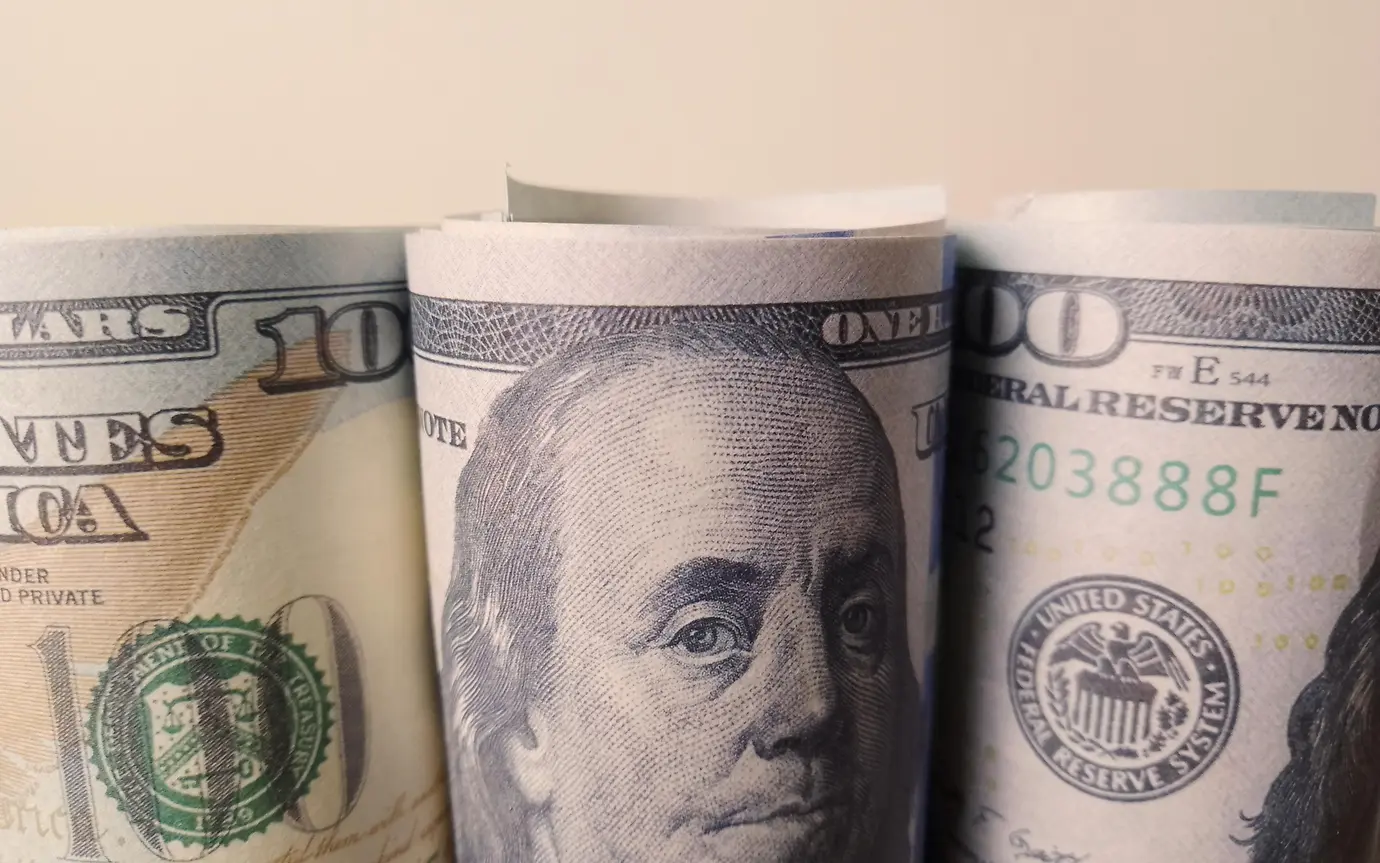
It has been a long and volatile couple of weeks for markets since Donald Trump’s tariff announcements on 2 April, which he proclaimed Liberation Day. Both equities and bonds have sold off on concerns that the aggressive tariffs will lead to a trade war, higher inflation and a global growth shock. History suggests that during market turbulence, the US dollar – alongside gold – often acts as a safe haven for investors. However, this has not been the case, with the dollar index down around 4.5% since 2 April. The currency has slipped to a decade low against the Swiss franc, and a three-and-a-half year low against the euro. This week, we take a closer look at the US dollar, reasons for its recent weakness and what this could potentially mean for the global economy going forward.
Historically, when equities decline, investors seek stable assets, which usually includes the US dollar and US government bonds. Treasuries are considered among the safest investments in the world due to the US government’s creditworthiness. Meanwhile, the dollar, seen as the world’s primary reserve currency, tends to appreciate against a basket of other major currencies when global uncertainty rises. The dollar’s status as the world’s reserve currency makes it particularly valuable – the US is home to prestigious universities, a formidable military and remains a global leader in technology, science and legal frameworks. As a result, businesses, banks and people often view the dollar as the “currency of invoicing” – oil and commodities are all priced in dollars, for example. However, some are arguing the days of the US dollar as the world’s reserve currency are numbered.
For some, the Russian war in Ukraine was a moment to re-assess the dollar’s supremacy. Following Russia’s invasion of Ukraine, the US froze Russian-held US dollars and all dollar-denominated assets. It is possible some countries saw this as an opportunity to diversify away from the dollar, in case they fell afoul of the US and faced a similar route of having their dollar-denominated assets frozen. Since the war in Ukraine, China and India have purchased commodities from commodity-producing nations using their own domestic currencies, which further dented the dollar’s dominance. Then came Trump’s proclaimed “Liberation Day”, which has led to the dollar depreciating sharply. Several factors have contributed to this:
It seems every day brings news that directly impacts markets. US Treasury Secretary Scott Bessent, speaking at a private conference hosted at JPMorgan, said he expected Washington and Beijing would reach a deal in the “very near future”, although it is still early days.1
Nevertheless, it appears recent events have resulted in a “sell the dollar” moment. As trade tensions mount and the world de-couples, looking at the composition of the MSCI All Countries World Index can provide some insight. The US accounts for 70% of the world’s stock market and only 21% of the world’s GDP, while Asia accounts for about 13% of the world’s stock market and around 40% of global GDP. Put another way – companies like Coca-Cola and Apple may no longer provide investors with exposure to the fastest-growing Asian economies. This may be the start of a recalibration of the global stock market.
Recent events suggest the market has lost confidence in the Trump administration, and that the dollar was probably overvalued. We do believe it is premature to mark the end of the dollar and US exceptionalism. But if the Trump administration continues to alienate crucial allies and China carries on challenging the US, the coming years will tell whether the events of the last few weeks result in the dollar becoming less of a dominant force.
[1] Financial Times: https://www.ft.com/content/feaed7f0-601a-4a9a-a6c2-3ef8f869d1f2
This communication is provided for information purposes only. The information presented herein provides a general update on market conditions and is not intended and should not be construed as an offer, invitation, solicitation or recommendation to buy or sell any specific investment or participate in any investment (or other) strategy. The subject of the communication is not a regulated investment. Past performance is not an indication of future performance and the value of investments and the income derived from them may fluctuate and you may not receive back the amount you originally invest. Although this document has been prepared on the basis of information we believe to be reliable, LGT Wealth Management UK LLP gives no representation or warranty in relation to the accuracy or completeness of the information presented herein. The information presented herein does not provide sufficient information on which to make an informed investment decision. No liability is accepted whatsoever by LGT Wealth Management UK LLP, employees and associated companies for any direct or consequential loss arising from this document.
LGT Wealth Management UK LLP is authorised and regulated by the Financial Conduct Authority in the United Kingdom.